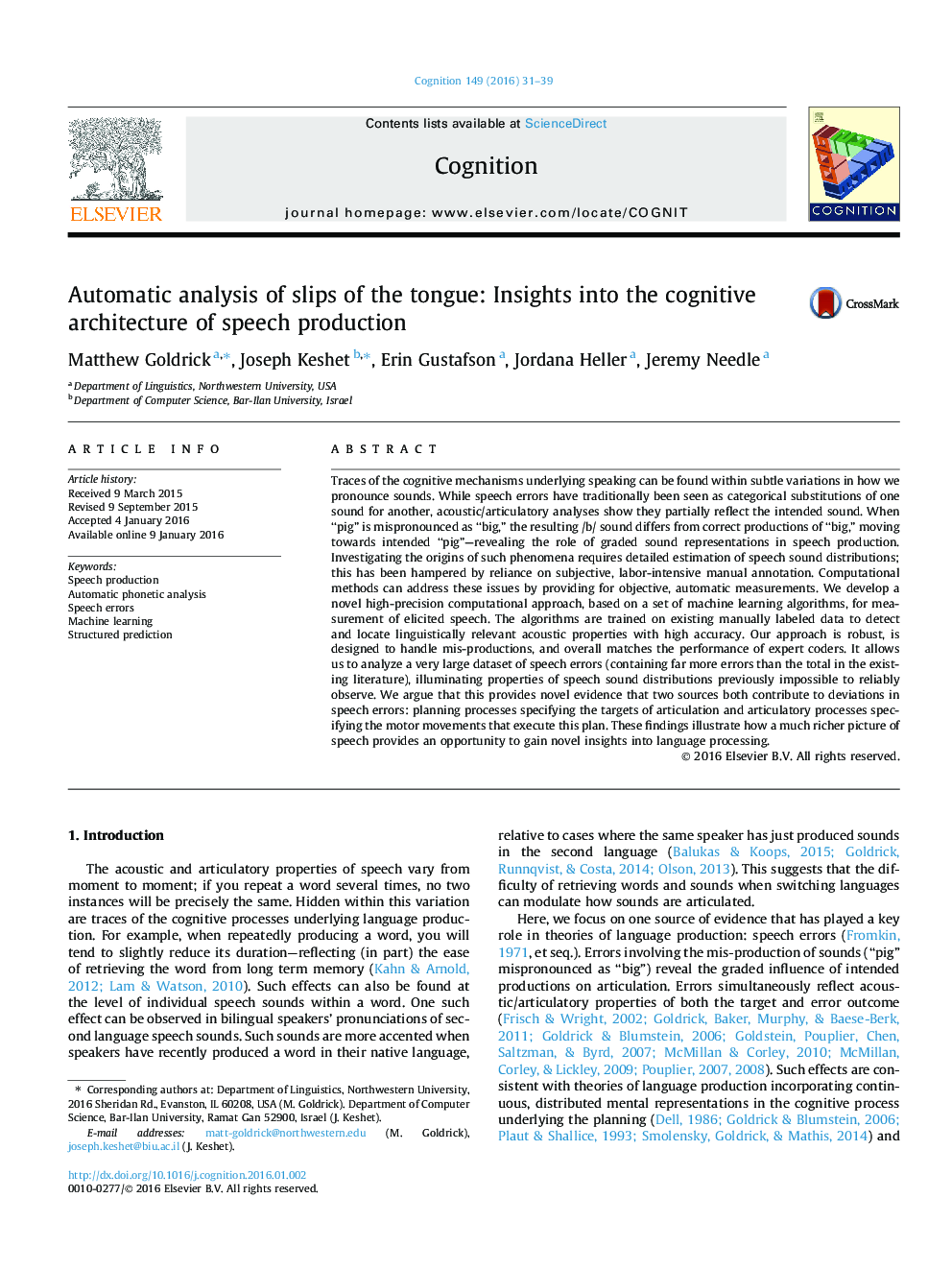| کد مقاله | کد نشریه | سال انتشار | مقاله انگلیسی | نسخه تمام متن |
|---|---|---|---|---|
| 926436 | 1474118 | 2016 | 9 صفحه PDF | دانلود رایگان |
• We develop a high-precision computational approach for measuring elicited speech.
• This allows analysis of a set far exceeding the size of previous speech error studies.
• Illuminates properties of errors previously impossible to reliably observe.
Traces of the cognitive mechanisms underlying speaking can be found within subtle variations in how we pronounce sounds. While speech errors have traditionally been seen as categorical substitutions of one sound for another, acoustic/articulatory analyses show they partially reflect the intended sound. When “pig” is mispronounced as “big,” the resulting /b/ sound differs from correct productions of “big,” moving towards intended “pig”—revealing the role of graded sound representations in speech production. Investigating the origins of such phenomena requires detailed estimation of speech sound distributions; this has been hampered by reliance on subjective, labor-intensive manual annotation. Computational methods can address these issues by providing for objective, automatic measurements. We develop a novel high-precision computational approach, based on a set of machine learning algorithms, for measurement of elicited speech. The algorithms are trained on existing manually labeled data to detect and locate linguistically relevant acoustic properties with high accuracy. Our approach is robust, is designed to handle mis-productions, and overall matches the performance of expert coders. It allows us to analyze a very large dataset of speech errors (containing far more errors than the total in the existing literature), illuminating properties of speech sound distributions previously impossible to reliably observe. We argue that this provides novel evidence that two sources both contribute to deviations in speech errors: planning processes specifying the targets of articulation and articulatory processes specifying the motor movements that execute this plan. These findings illustrate how a much richer picture of speech provides an opportunity to gain novel insights into language processing.
Journal: Cognition - Volume 149, April 2016, Pages 31–39
